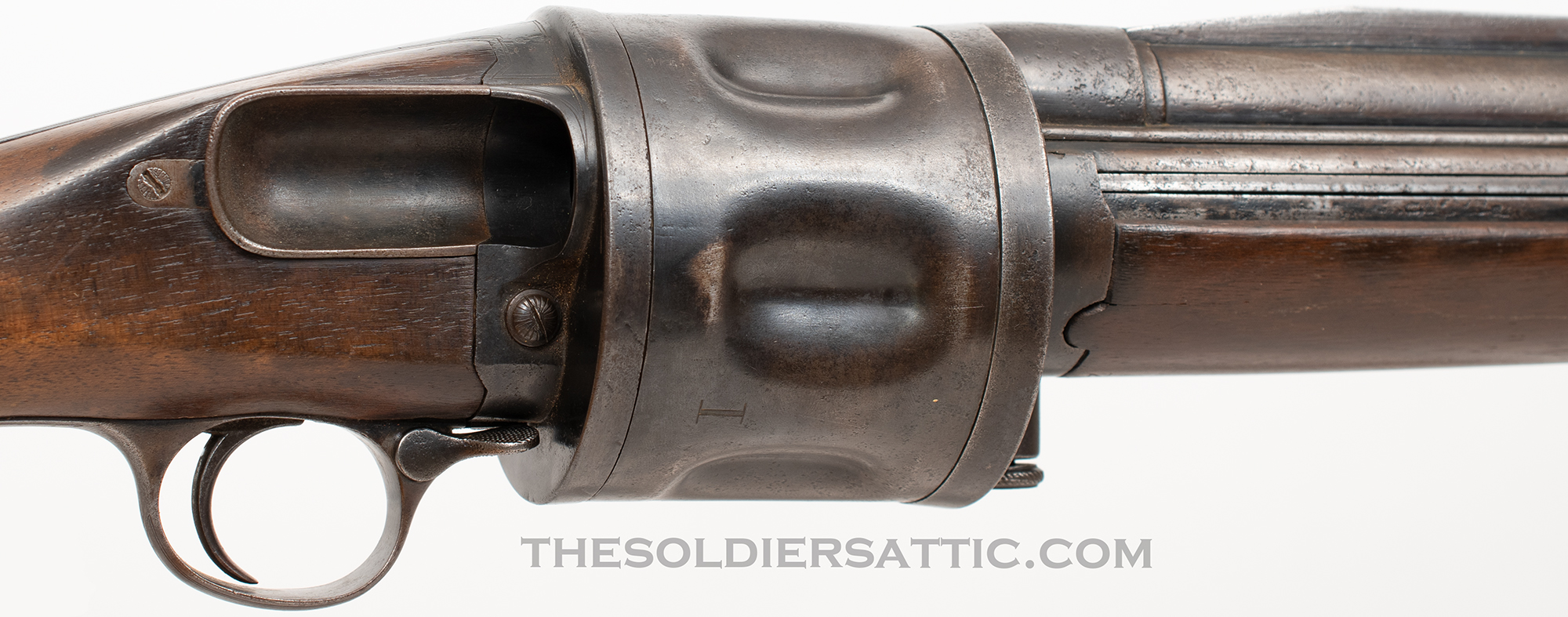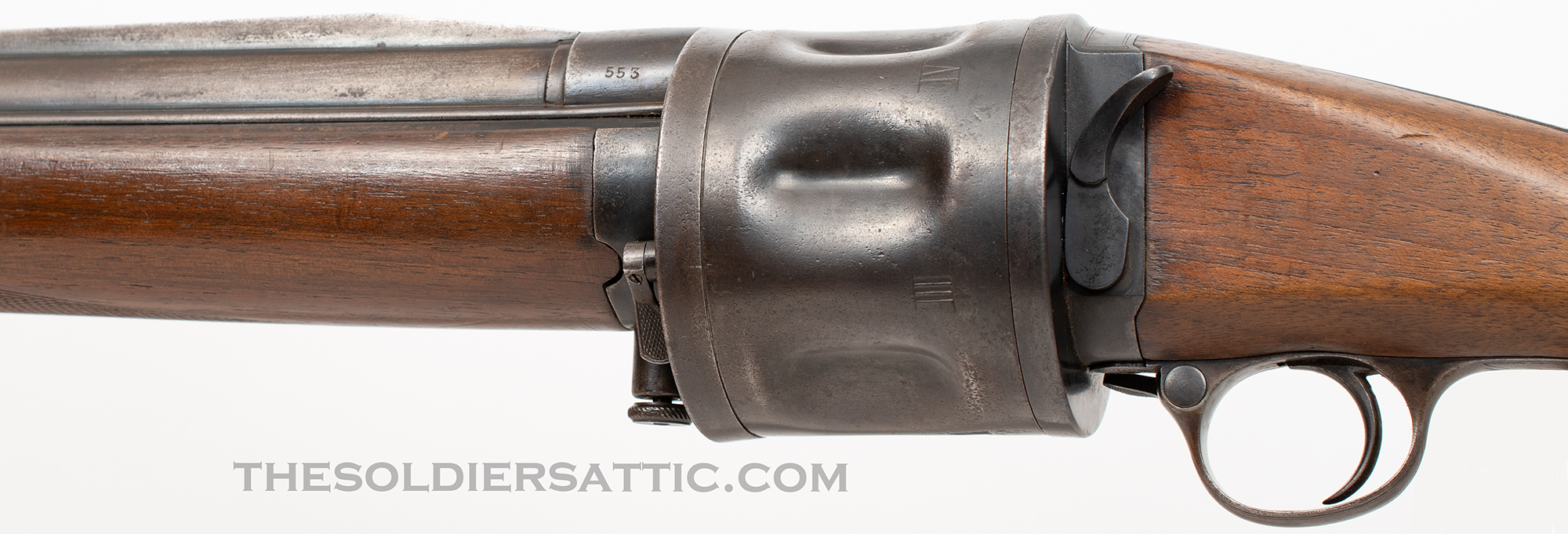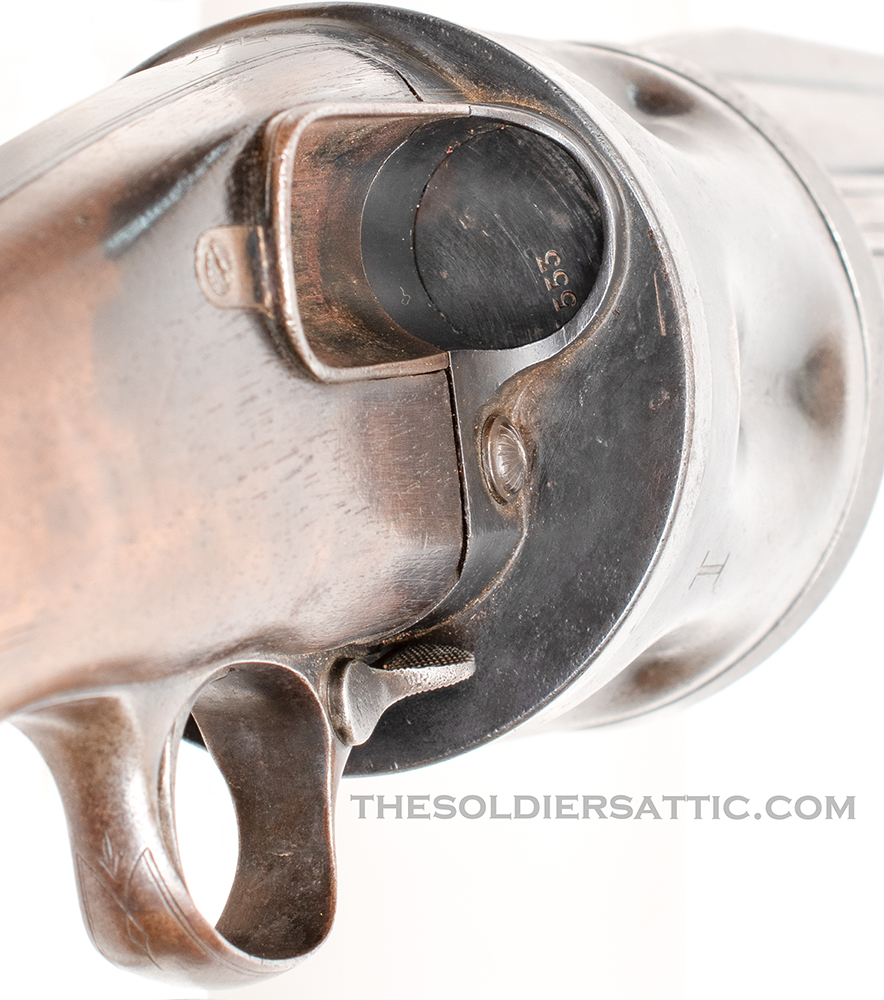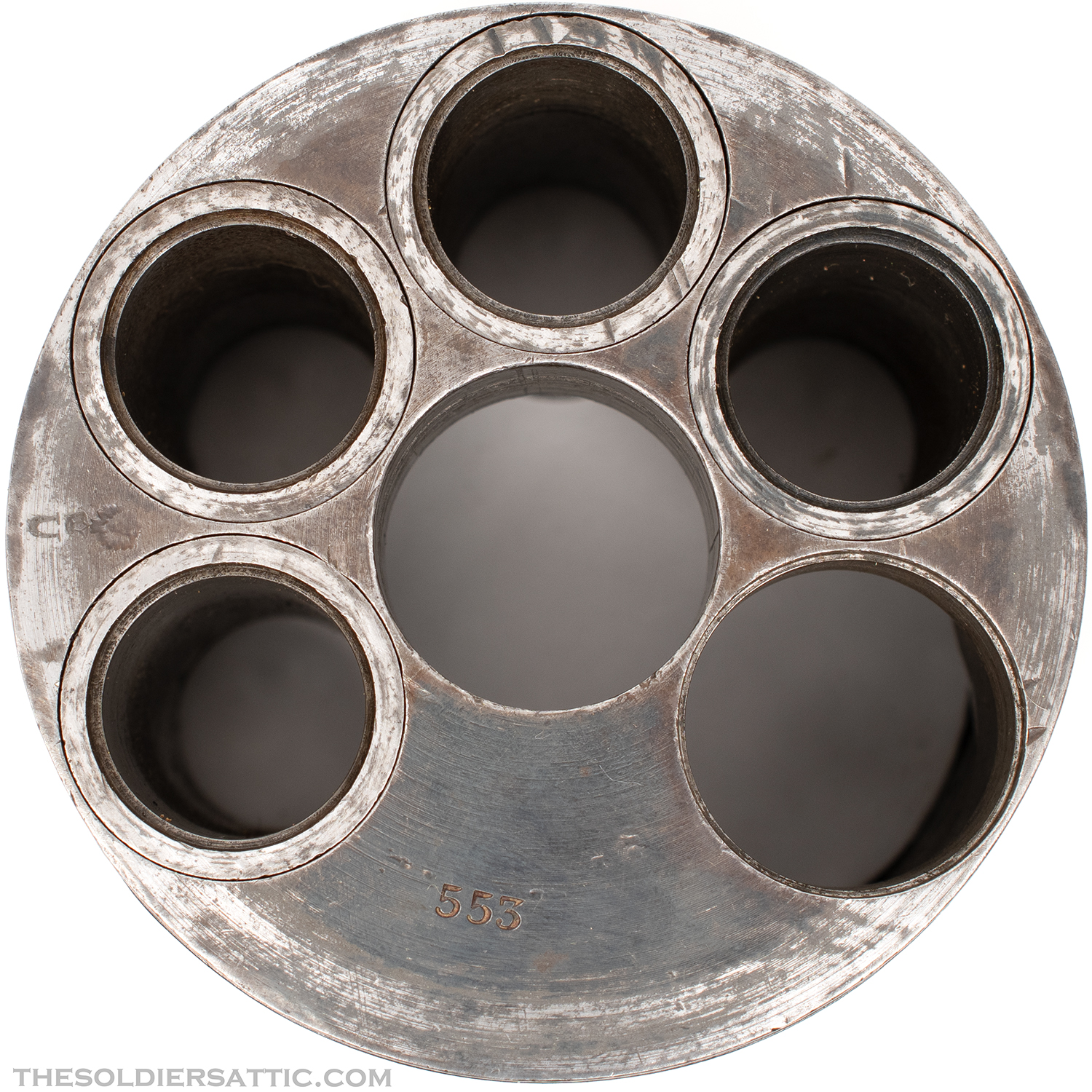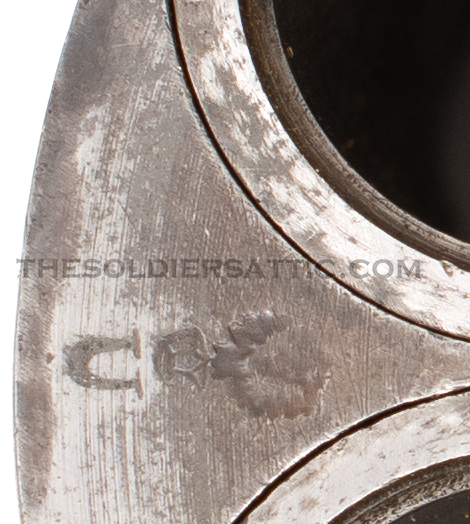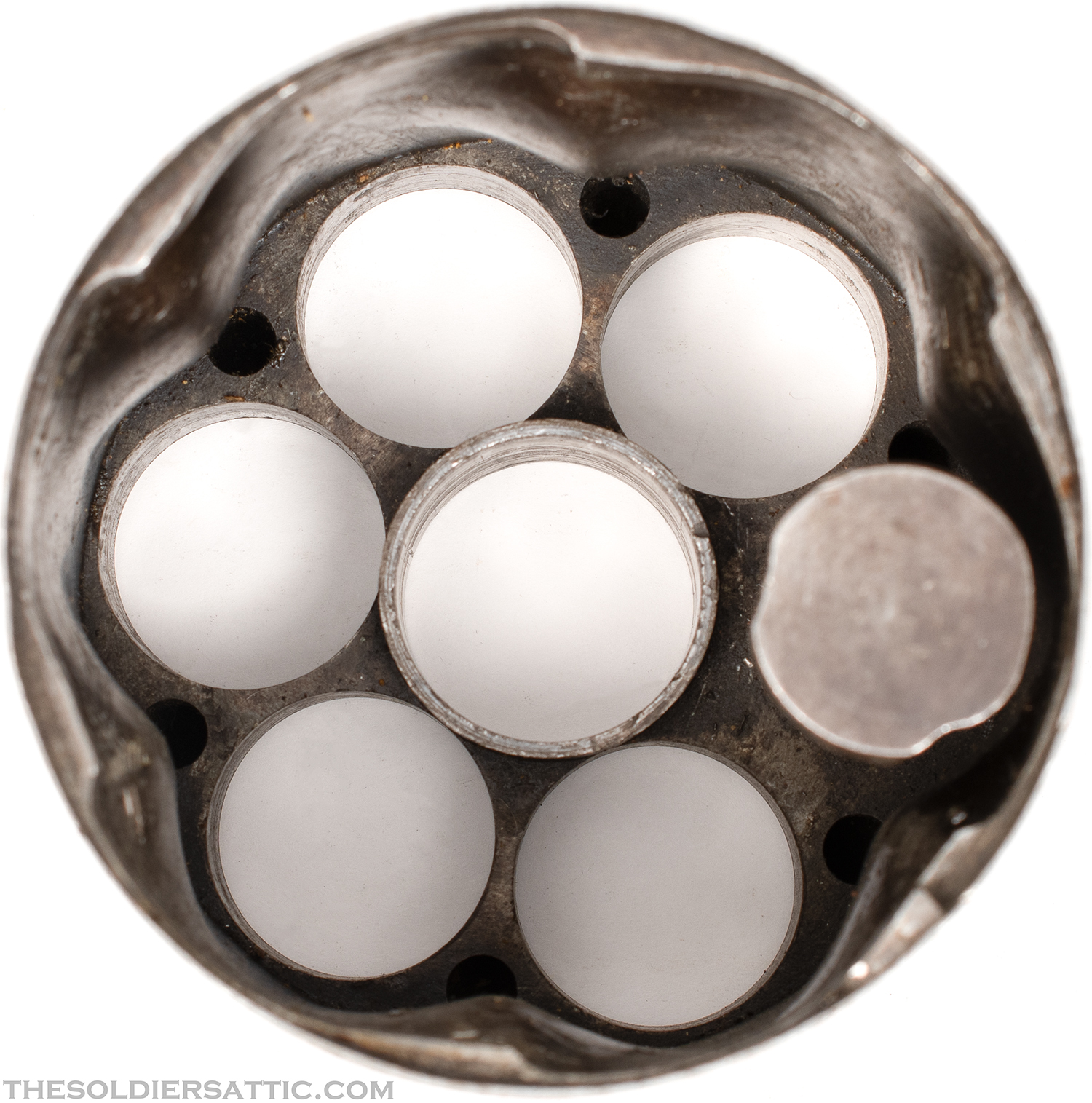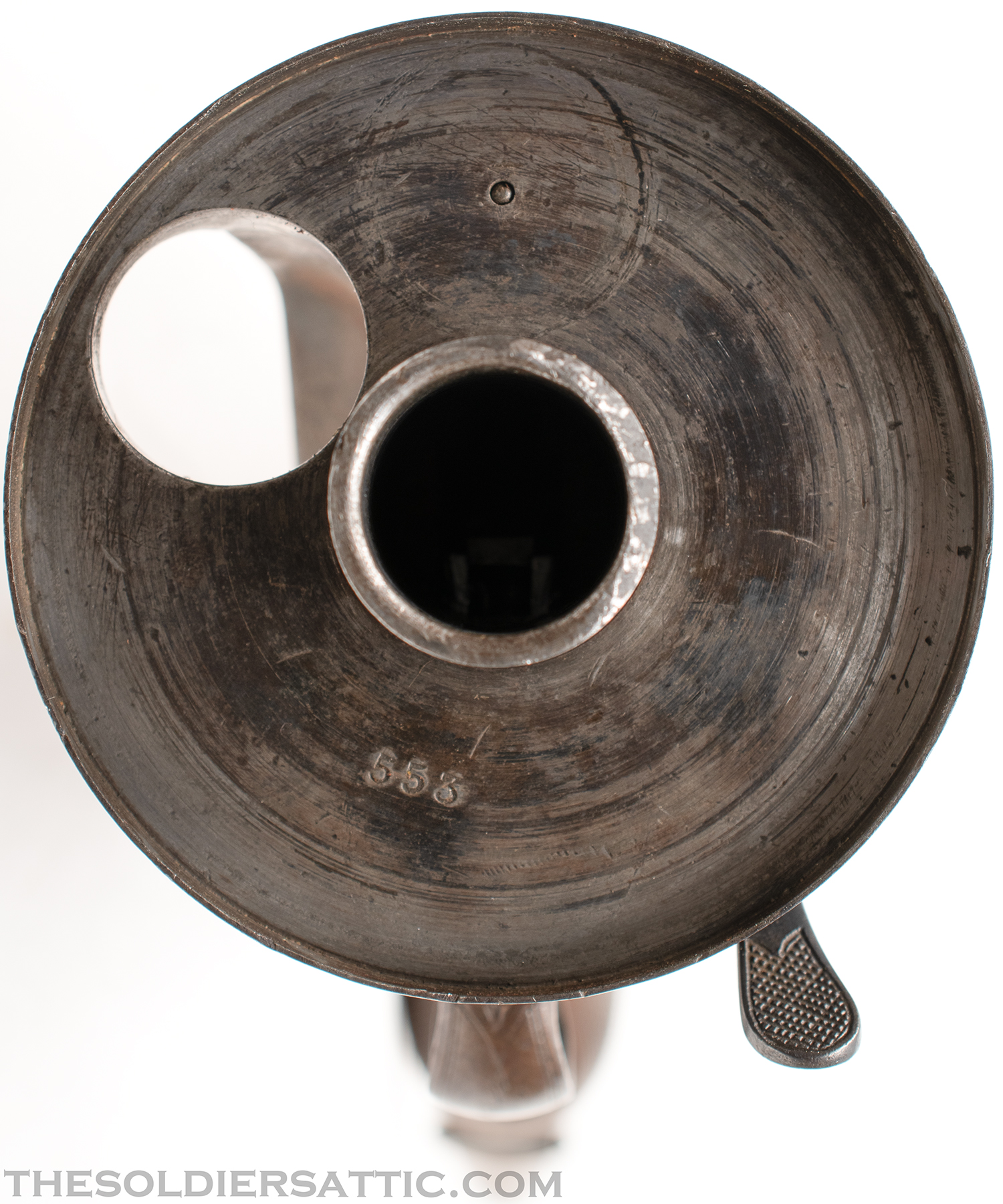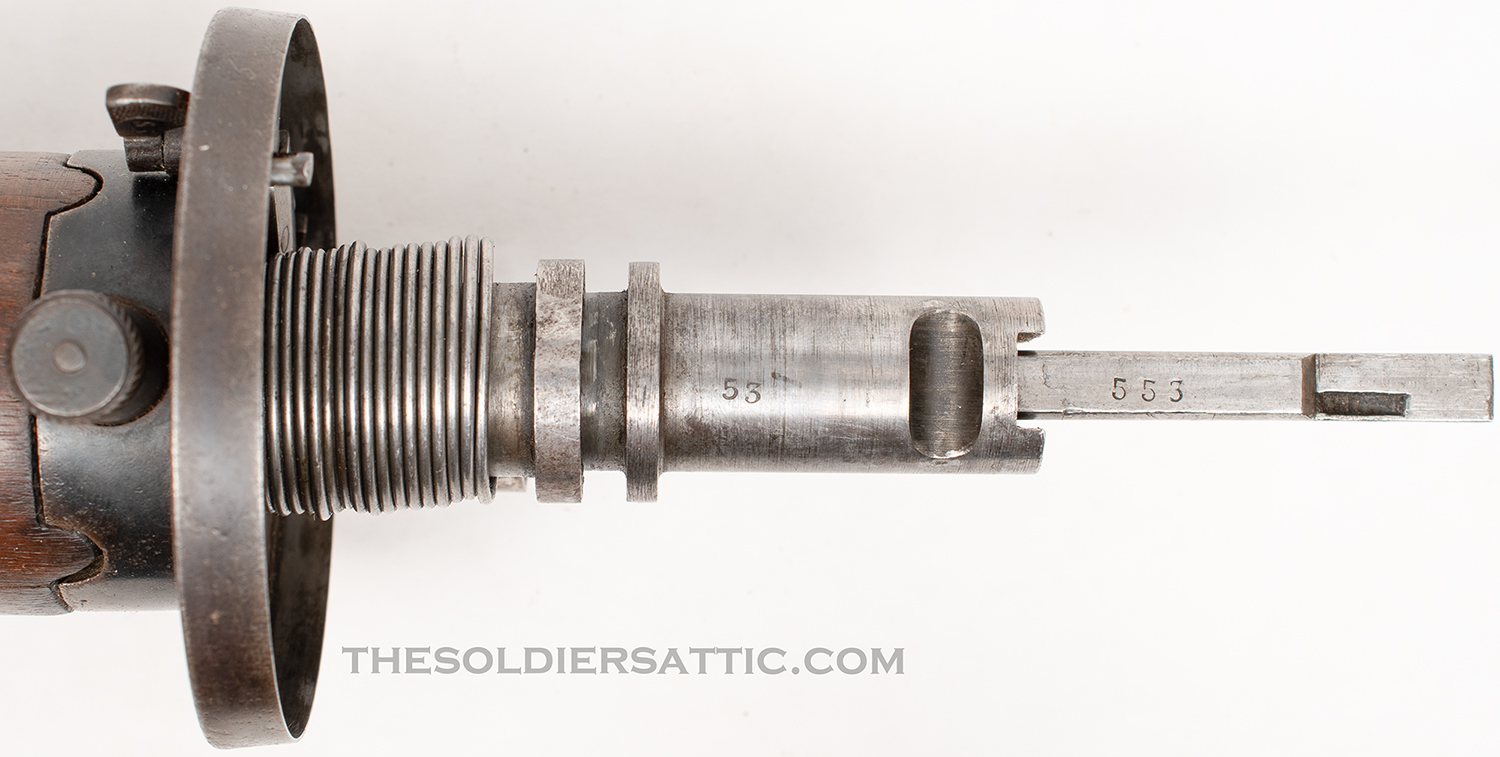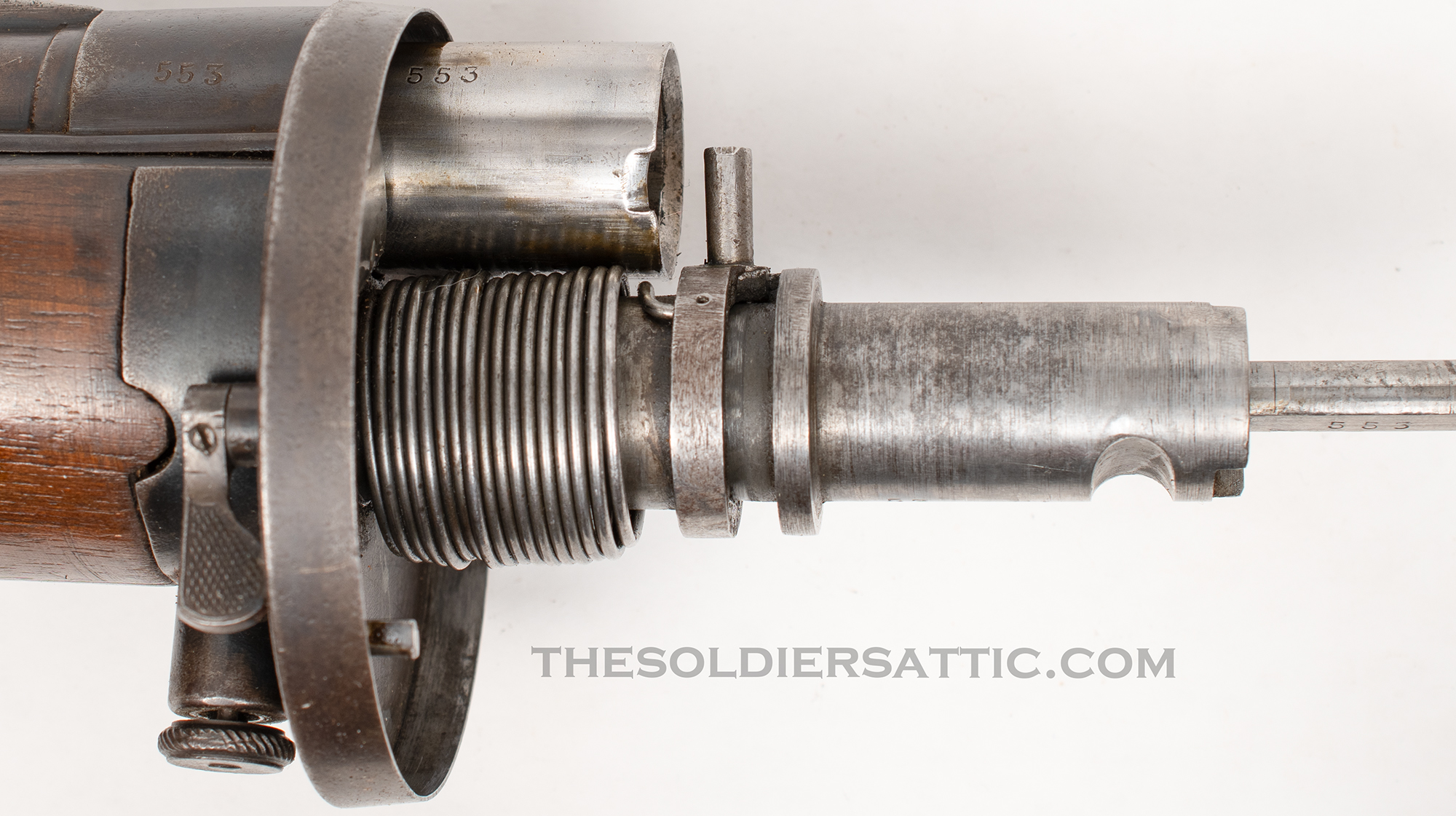The Becker Revolving Shotgun in 16 gauge is both a rare and interesting single barrel shotgun produced in Germany after World War I. Based on a blow-forward action designed and patented by Deutsche Jagdwaffen-Gesellschaft of Dusseldorf, Germany in 1899, the Becker Revolving Shotgun, or more formally Schrotflinte [Shotgun] System Becker, was not produced until the 1920s by Romerwerk Waffenfabrik (also known as Römerwerk and Röhmerwerk) in Suhl, Germany. The Suhl region was known for its many gun manufacturers, many of which, including Romerwerke, operated within a cottage industry of making and supplying gun parts from which others then assembled complete arms. However, it appears that the Becker Revolving Shotgun was a complete product of Romerwerke and is documented in gun journals and advertisements of the period. No total production numbers of this shotgun are known, but research indicates as few as 100 to about 500 were manufactured.
While holding an undeniably unique position in the evolutionary line of revolving longarms, the Becker Revolving Shotgun is interesting to me for, in addition to its rarity and German origin, the semi-automatic, blow-forward design that efficiently captures expelled gases from spent rounds to recock the action and expel empty shells. Unlike traditional revolving arms, the Becker Revolving Shotgun lacks an external hammer that can be manually cocked to rotate the cylinder and fire a new round. The shotgun also utilizes a single action trigger system, which means that one cannot activate the hammer, rotate the cylinder, and fire a new round by pulling the trigger like a traditional double-action. To operate the Becker System, the barrel is pulled forward about an inch to cock the action. When fired, the barrel slams backwards firing the shell while also covering the chamber sleeve and shell to form a seal that captures spent gases. These gases are channeled back into the system and used to push the barrel forward, recocking the action, as the cylinder rotates under spring tension to bring a new round into firing position. After cocking the barrel, the spent gases are released through the cylinder, ejecting the previously fired shell out of the loading port in the rear cylinder shield. If the shell is not ejected, there is a manual ejection rod mounted on the right side of the firearm. At this stage the shotgun is ready to fire once again. As a few folks mentioned in my sources, woe is the person who shoots left-handed and receives the hot gases and ejected shell right to the face!
Loading is a two-handed operation but seems to become easier with practice. Because the barrel slides over the chamber sleeves, it must be pulled forward and cocked to allow the cylinder to spin freely and load the firearm. The cylinder has five chambers marked “I” through “V” in Roman numerals on the outside of each chamber. A sixth “chamber” is sealed and has a shaft that blocks the loading port when the shotgun is fully loaded. This shaft also stops the cylinder from rotating after the last round is ejected. When all cylinders have been fired, the cylinder marked “I should be aligned with the loading port on the rear cylinder shield.
To load, place a shell into the “I” chamber. Unlock the cylinder by pushing down on (or towards the barrel) the small lever, located on the lower left side of the front cylinder shield. Rotate the cylinder so chamber “II” aligns with the loading port and insert the next round. A coil spring, wrapped around the shaft under the barrel, has an arm that catches the shaft in the sealed “chamber.” As the cylinder rotates during loading, it pulls the arm and tightens the coil spring, which then will “unwind” as the shotgun is fired, rotating fresh rounds into firing position and allowing spent shells to exit the loading port. To complete the loading process, repeat the procedures above until cylinders “III” through “V” are loaded. Pull the little lever up (away from the barrel) to lock the cylinder. The shaft in the sealed “chamber” should be in front of the loading port; shotgun is now ready to fire.
The Becker Revolving Shotgun has quite a few small parts that are essential to the blow-forward system. While the system works well, it is apparent that fouling, dirt, rain, plus wear and tear could all cause issues with function. Perhaps it is for these reasons that the shotgun was never produced in great numbers or the design adopted by the industry. Be that as it may, the firearm easily breaks down into two sections. Pushing down on the large lever located on the left side of the wrist, just behind the rear cylinder shield, unlocks the cylinder assembly and butt stock from the barrel, front cylinder shield, barrel/heat shield, and forearm.
A drum, front cylinder shield, and rear cylinder shield comprise the cylinder. There are five removable chamber sleeves inserted into the back of the drum and one shaft in the sealed “chamber”. The firing pin enters through the rear cylinder shield. As mentioned, the cylinder is advanced by the coil spring anchored to the front cylinder shield and wrapped around the connecting shaft below the barrel. The spring’s arm catches the sealed “chamber” shaft and rotates the cylinder when firing. The connecting shaft inserts through the center of the cylinder and into the receiver where it is locked in place by the large lever.
Numbers are found stamped on the left side of the barrel/heat shield, visible when the firearms is assembled. Matching numbers are also found on the rear drum wall (above the sealed “chamber”), inside the rear cylinder shield, bottom of the connecting shaft, just forward of the cylinder coil spring (last two digits), and the portion of the barrel that encases and seals the chamber sleeves. While this could be a serial number, I am not convinced. Due to the delicate workings of the blow-forward system, I believe it is more likely that these numbers are assembly numbers. Because the parts were fit by hand and the tolerances so critical, assembly numbers almost seem required to match the fitted and polished parts. The action of our example is sluggish due to wear, age, and perhaps old dirt and grease, so it is easy to imagine that one could not just throw new parts together without a little polishing here and there. Of course, it is always possible these numbers could be both serial and assembly as many, many examples of this type of numerical use are present in firearms manufacturing.
Addition marks, eagle/crown/U, of the Suhl Proof House are found on the rear of the cylinder drum wall. I did not remove the barrel, but presumably more proof and testing marks would be found on the bottom side of the barrel.
Please see our example for sale here
Many thanks to these sources of information, among many others, used for our research and a great video by Ian McCollum at Forgotten Weapons.
Video: Forgotten Weapons
Website: German Hunting Guns





